Quirkworthy: Unicast Review
Jake Thornton hat auf seinem Blog Quirkworthy die neuen Unicast-Modelle von Prodos Games unter die Lupe genommen.
Anmerkungen: Alle Hervorhebungen im Text durch Brückenkopf Online
Today is mostly about the pictures.
In this article I want to focus on the technical aspect of Prodos’ new UniCast process/material, as shown in the final product, rather than the aesthetic of the models. Of course, whether you want to buy any of these depends on whether you like the look of them or not, but for me as a design professional, I’m curious as to what this means for the games I work on next year and beyond. Does this offer something different for creators to play with?
Having looked at these sample UniCast model from Prodos, I think they are technically a very impressive lot. All three are single piece*, and as far as I know, none of them would be possible in reusable moulds of anything else. Not without backfilling some of the undercuts. Well, most of the undercuts.
Traditionally, these models would have been chopped into several parts and either reassembled by you or preassembled (adding to the cost) by the factory before they were shipped.
Did I mention the undercuts? Way too many undercuts and rippers to cast in one piece. Way, way too many. Yet here they are.
So I’m impressed.
Being single piece is good for all sorts of reasons we’ve already discussed. However, we didn’t really talk much about the crispness and level of detail that Prodos have got here. It’s top notch.
The following pics are mostly larger than life (at least they are on my screen). In fact, speaking of size, before we look at the details let’s see how big these samples are.
These are the first models that came to hand: the ref and an Orx Guard from DreadBall, and Nyx from Prodos. I took the picture with the bases level so you can see their relative height. The total height of the UniCast model, from the bottom of her base to the top of the spike through the skull on her back, is 50mm exactly. Base of large exoskeletal overboot to eye (the world’s most perverse measuring system) is 35mm.
Anyway, details. Writing on Calypso’s shield.
Close up of Calypso’s face (note her tiara/headband).
Look at the gaps around her head, within the armoured cowl, plus the spaces between shoulder pads, under her arms and around her waist. You just assume the arms have to be separate, right?
You can also see some of the detail on her arm holding the shield. Yes, the detail continues just the same behind the shield.
Rear shot of the same model. This shows the only casting imperfection I could find on any of them: one of the grab handles on her backpack has not filled properly in the mould, or has snapped off before it reached my packet (I searched for it unsuccessfully). No bubbles anywhere on any of them, slight mould lines in some places as you’d expect, and wispy flash here and there. Nothing that should pose any real challenge, and better than many models in any material.
Last shot of this model, mainly to show the curl at the hem of the skirt. A lovely touch, and yet another casting headache which doesn’t seem to be causing Prodos any issues. You can also see that the grab handles are cast with space underneath rather than filled in or flush with the pack as they would be on metal or most plastic models (unless they were separate pieces). Lots of detail, undercuts everywhere, single piece model. Crazy.
Just showing the undercuts. Sorry to keep going on about that, but it’s the key feature of why these are impossible single piece casts in any normal medium. You can get away with a little bit of undercutting by using bendy PVC, but nothing like this.
My favourite of the three models. Look at the depth of detail around her face.
Same model showing detail (and some skulls especially for all you GW fans). Many times life size.
Same model from the back.
So, as I said, I’m very impressed that they’ve been able to cast each of these as a single piece. It’s technically very impressive. The detail is sharp and the casting crisp. I’ve done nothing any of these – they’re straight out of the packet. Clean up looks straightforward and nothing out of the ordinary.
So, to sum up.
As discussed in previous posts and in comments, Prodos has a number of serious issues at the moment with regards to communications with customers and fulfilling Kickstarters. These plainly need to be addressed. Whether Prodos can dig their way out of the hole they’re in remains to be seen. I hope they can.
Perhaps UniCast can build them a shovel
*I considered the possibility that they’d been preassembled, but if they have it’s unbelievably well done and I can’t see any joins. I’ve checked with Prodos and they assure me they’re all cast as single pieces. It’s not really that I disbelieve them, it’s just an instinctive reaction from 40+ years of looking at toy soldiers in all sorts of scales and mediums tells me that’s not possible.
Zusammenfassung und Einschätzung:
Jake’s Fazit kann man am besten mit ungläubigem Staunen beschreiben. Prodos schaffen mit ihrem neuen Gussverfahren ganz offenbar Dinge, die mit keinem anderen Gussverfahren auch nur in Ansätzen denkbar wären. Zahllose Hinterschneidungen, Vertiefungen und Winkel würden bei einem einteiligen Modell jede andere Technik vor unlösbare Aufgaben stellen, aber Unicast scheint all dies möglich zu machen, Die Griffe auf dem Rücken des ersten Modells sind zwar nur ein kleines Detail, aber es ist auch uns ein völliges Rätsel, wie der Hohlraum hinter den Griffen mit einer einzelnen Gussform umsetzbar sein soll. Jedes normale Gussverfahren würde diese Griffe als anklebbare Extrabits mitliefern.
Wie Jake selbst sagt, kann man derzeit noch nicht genau sagen, ob Prodos hier nachgeholfen oder nachträglich korrigiert haben, es finden sich aber keinerlei Spuren an den Modellen, die auf Klebestellen oder einen Guss in mehreren Teilen hindeuten würden. Jake ist enorm erfahren und wir sind relativ sicher, dass er einen solchen Schwindel im Zweifelsfall durchschauen würde.
Zusammenfassend kann man derzeit wohl nur sagen, dass Prodos ganz offensichtlich ein Gussverfahren entwickelt haben, das alles bisher bekannte in den Schatten stellt. Die Modelle weisen zwar Gussgrate auf und an ein/zwei Stellen haben wir Gussfehler entdeckt, aber diese Mängel waren absolut im Rahmen und schmälern das Ergebnis letztendlich kaum. Unicast hat ohne Zweifel das Zeug die Miniaturenherstellung nachhaltig zu revolutionieren
Quelle: Quirkworthy


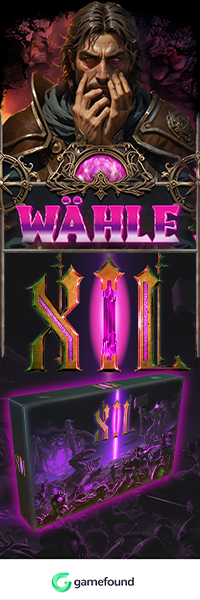

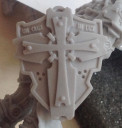
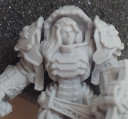
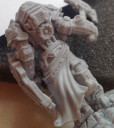




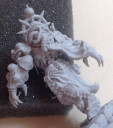

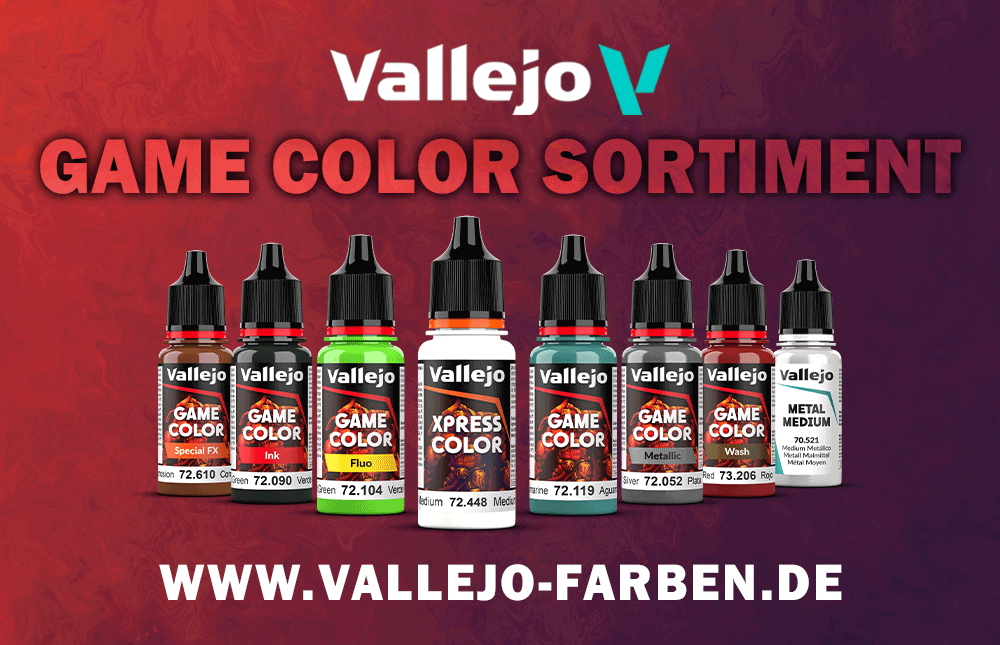
Sehr, sehr beeindruckend, das klingt fast zu gut um wahr zu sein…
Aber Jarek ist ein extrem guter Techniker, das hat er schon mehrfach bewiesen.
Mall offtopic: Hast Du gerade den Artiekl, den Du selbst eingestellt und kommentiert hast, hier noch einmal kommeniert? Strange 😉
Ansonsten bin ich extem gepannt, ob das Verfahren wirklich hält, was es verspricht und was dann in Zukunft an Minis auf uns zukommt. Das ganze ist schon als eine Revolution in der Branche zu sehen.
Wieso? Ich halte das SO eigentlich für korrekt…
In eine Meldung/Bericht/usw. gehören nur Fakten und Hintergründe, in den Kommentarbereich dann die Meinungen dazu – auch die des Autors.
Das ist doch genau das, was die „Lügenpresse“ heute eben NICHT mehr macht, da werden Artikel gleich mit der persönlichen Meinung des Schreibers gewürzt… und das versteht man dann unter „Meinung vorkauen“… und nicht mehr als Information.
Ich finde, Christian hat alles richtig gemacht…
@kk Schleimer 😉
Habe mir eine Box Mabs für Slaanesh-Kyborgs geholt und muss sagen mir sind fast die Augen rausgefallen als sie Ausgepackt habe.
Die Detail klar und sauber, keine Blasen oder Gußgrate und es passte alles sauber ineinander. Wie auch immer sie das schaffen es ist der Wahnsinn.
Da ich selber, wenn auch auf untersten Niveau, Formen baue kann ich nur sagen das mit Mehrteiligen Formen fast alles möglich ist. Stellt sich halt nur die Frage ob sich der Aufwand dafür steht. Bei schleuderguss ist halt nur eine zweiteilige Form möglich, beim Resin Guss dementsprechend mehr. Aber je aufwendiger die Form desto grösser die Gefahr von Fehlgüssen.
War das nicht eine Kombination aus Silikonform mit anschließender Einbettung in eine Metallhülle? Wenn man da das Silikon an entscheidenden Stellen so gestaltet, dass es ohne die Ummantelung frei beweglich ist, kann man das sicher auch mit wenigen Teilen machen.
Ja so hab ich das auch verstanden. Kommt halt auf die Anzahl der Hinterschneidungen an.,aber gerade so Griffe sind halt etwas tricky. Ich Habs mal so gelöst das ich die Form gegossen habe und anschliessend mit einem Scalpell einen Schnitt gemacht habe um die Mini entformen zu können. Das giessen geht zwar ganz gut aber man muss beim entformen höllich aufpassen das man nichts von der Form abreisst.
Ich hoffe echt das Prodos gut aus dem Kickstarter Debakel rauskommt denn ich liebe ihre Minis und finde echt das es nicht viel vergleichbares gibt.
Auch wenn das Gezeigte sehr gut aussieht – und ich gerne ein Team der Mädels für eine Sammlung hatte – solange Prodos nicht ihrer Lieferverpflichtung aus dem AvP-Kickstarter nachgekommen sind, fließt da kein cent.
Und selbst dann werde ich mir überlegen, einer solchen…XXX… Firma noch einen Cent nachzuwerfen.
Übrigens kam die Woche wieder eine „schöne“ Mail von Prodos, warum sie immer noch nicht liefern können… (oder besser wieder mal)…
RN Estudio müssen ein ähnliches Verfahren haben – zumindest war meine Reaktion identisch als ich die letzten Minis von Sucubus bekommen habe….
LG Ralf
+1
Da kann ich mich Christian nur anschließen – fast zu gut um wahr zu sein!
klingt ja alles ganz spannend und vielversprechend. allerdings werden die püppies für 20pfund verkauft, was schon auch nicht ohne ist, insbesondere nachdem sie uns den niedrigeren preis bei der herstellung vorgekaut haben.
warten wir ab, was das für änderungen nach sich zieht…
Kleinserien sind immer teurer als reguläre Linien, und im Moment sind das ncoh Kleinserien.
Vergissmal nicht die anderen Faktoren wie Personal, Miete etc…